Jim Bennitt
I recently got reaquainted with Jim Bennitt, a yoga teacher based in Chicago. Both Jim and myself have studied with Andrey Lappa and taken his teacher training.
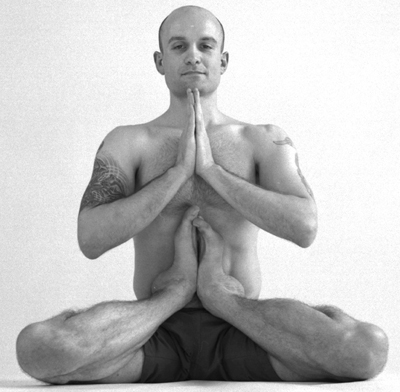
I recently got reaquainted with Jim Bennitt, a yoga teacher based in Chicago. Both Jim and myself have studied with Andrey Lappa and taken his teacher training.

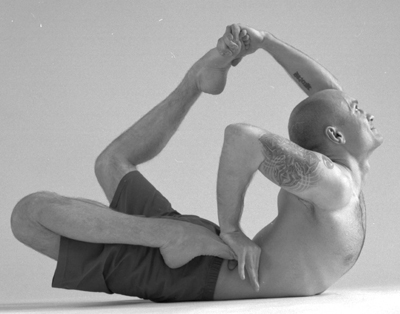
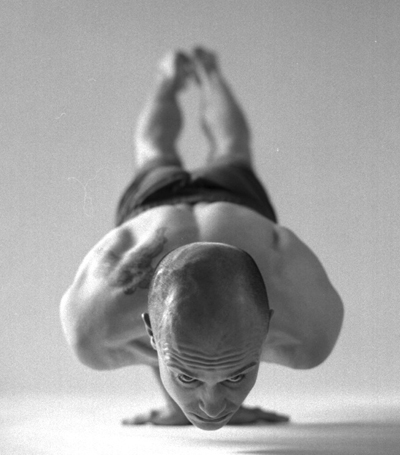
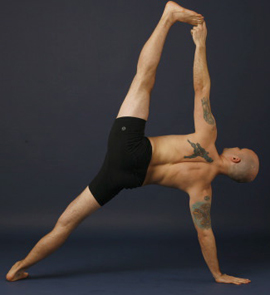
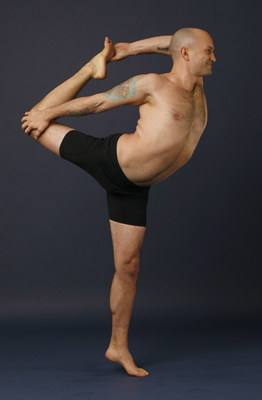
NK: Hi Jim, I seemed to recall that you wrestled at some point in your life? Do you think your wrestling experience helped deepen your body awareness and hence your ability to do yoga? What about when you adjust people in yoga postures (assuming you do hands on adjustments?
Jim Bennittt: I did wrestle in from the age of 12 to 20. Once I began getting serious about yoga (practicing 3 times a week) my practice began to advance quickly because of the discipline and body awareness I gained through wrestling.
At that time I began working as a massage therapist. The anatomy training we received in school gave me a big advantage once I began teaching. Also, I felt very comfortable adjusting students because of my time spent as a therapist.
NK: I read on your website that you don't focus on alignment. What do you focus on?
Jim Bennitt: As far as alignment goes, I wouldn't say I don't focus on it. I actually do, it's just not my ONLY focus. The breath gets as much attention as does meditation.
NK: You took Andrei Lappa's teacher training in Ukraine and you don't speak ukrainian. what did you hope to get and what did you end up learning? Do you still use any of what you learned from Andrei in your yoga classes today?
JB: I do still use some of what I learned from Andre. My classes and practice don't resemble his too much, but I definitely picked up some powerful techniques and ideas.
NK: When you teach your classes do you do the poses with your students or do you instruct with vocal instructions only?
JB: I do not practice with the class very often. I can't see what's going on in the class and I lose a sense of pratyahara in my own practice which I believe is very important. Also, lots of teachers injure themselves when they demonstrate in class.
NK: How do you define pratyahara?
Jim Bennit: Focusing INSIDE the body and mind. Feeling the circulation increase in the abdomen, hips etc. Visualizing objects Inside the mind during meditation.
NK: How does you own personal practice different from classes that you teach. (I remember when Priya yoga was still around you said your practice differed alot from what you taught. Is the same true today?
Jim Bennitt: My practice is different then the classes I teach. I do some techniques that most people would consider very intense. To me they are not because of the amount of practice I have done.
Most students need more preparation.
Also, I test certain techniques and sequences quite a bit before I teach them so I know there effect.
Sometimes my studio is like my lab and I'm conducting experiments.
NK: I get the sense that you have practiced a lot (and continue to do so) in order to have gotten to where you are now. What are some of the techniques that you practice that others would consider "intense?" What do you experience when you do them?
JB: I guess the techniques (besides the obvious advanced postures) is long breath retentions in certain mudras (like maha mudra).
If you rush into them, they can really freak out the nervous system and they also raise the blood pressure temporarily.
As a result of practicing these techniques, I get a nice balance of building up energy while creating a certain mental stability.
NK: What can you tell me about tantric vinyasa yoga?
JB: What Tantric Vinyasa Yoga really boils down to is a skillful use of energy. Through an intelligent yoga practice, you should build energy, not deplete yourself of it.
In Tantric Vinyasa, we don't stop there. We can actually increase the circulation of energy (prana) in certain areas of the body to get a desired result.
Choosing appropriate postures, breathing and meditation techniques is the key.
NK: You also run a teacher training program. What are the most important things that you hope to teach your teacher trainees?
JB: The teacher training at TeJas teaches students how to do this in an effective way. Also, the training is really a mentorship. We share our experiences and what we have learned on a pretty personal level. We are really there for the students.
NK: Thanks alot Jim.
To find out more about Tantric Viniyasa yoga or for a schedule of when and where Jim teaches check out jimbennitt.com.
p.s. If you want to take a yoga holiday, Jim is running a yoga retreat in Aruba from Mar 17 to 24 (2012). Yoga Holidays are a great way to relax and meet new people. And I reckon you'd learn a lot from Jim.
